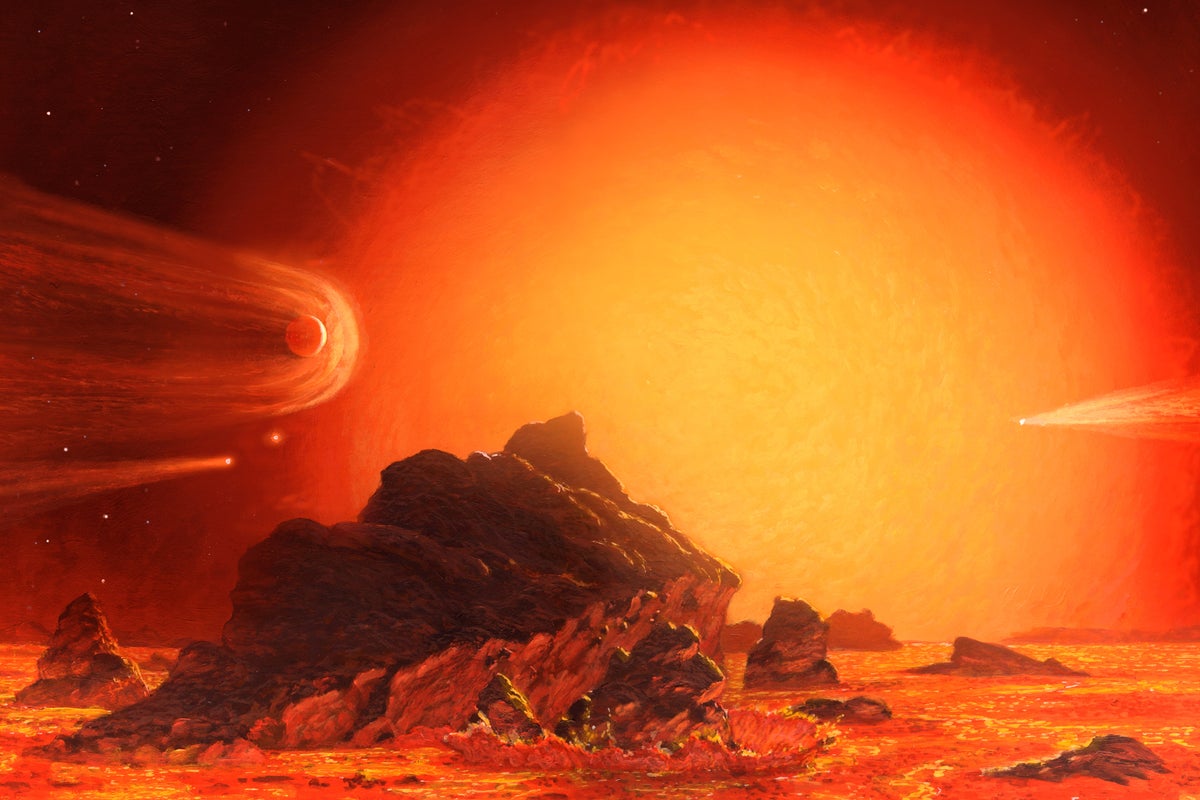Now Reading: Can Life Endure After the Sun Dies?
-
01
Can Life Endure After the Sun Dies?
Can Life Endure After the Sun Dies?

Fast Summary
- The sun is the primary source of Earth’s light and heat, driving life’s evolution and maintaining Earth’s climate.
- At its core, the sun fuses approximately 700 million tons of hydrogen into helium every second, producing vast amounts of energy (400 trillion trillion watts).
- Earth intercepts a minuscule fraction of this energy (~0.000000002%), warming it to an average calculated temperature of -15°C. Actual temperatures (~15°C) result due to greenhouse gases trapping heat.
- Human activities add about 40 billion tons of CO2 annually to the atmosphere, intensifying global warming over short timeframes.
- Over millions and billions of years, the sun’s core heats up as inert helium ash accumulates under increasing pressure. This causes greater luminosity and eventual planetary overheating.
- In about three billion years, Earth will lose all surface water due to increased solar brightness; oceans will evaporate in a runaway greenhouse effect. Eventually, rocks on Earth’s surface will melt as temperatures soar past 1,300°C when the sun becomes a red giant star.
- Mercury and Venus are expected to be engulfed by this expanding star. Earth’s ultimate fate remains debated but doesn’t look promising even if it escapes swallowing-it will lose its atmosphere entirely.
- Jupiter’s moons may initially melt before boiling away entirely from extreme temperatures; Pluto may briefly offer slightly better conditions (-10°C) due to possible greenhouse retention by vaporized methane until further cooling occurs after earthlike suns die into white dwarfs.
Indian Opinion Analysis
The scientific trajectory described not only highlights humanity’s current environmental challenges but also serves as a reminder that even astronomical stability is temporary over geological timescales. While immediate issues such as anthropogenic climate change are pressing for India-a nation grappling with erratic monsoons and increasing heatwaves-this long-term cosmic perspective situates human survival within larger existential vulnerabilities.
India’s focus on renewable energy aligns with adapting more sustainably within our fragile atmospheric conditions today but emphasizes dependency on technological ingenuity for future interplanetary contingencies should these distant solar challenges arise billions later. Even though hypothetical migration is discussed prominently in science fiction or radical theoretical solutions like shifting planetary orbits (“cosmic engineering”), near-term submission revolves around protecting our biosphere actively now than leaving future generations full-scale legacy dilemmas worsened unnecessarily unnecessarily broad maxim.entrenching curiosityAPPENDmatchespast






















